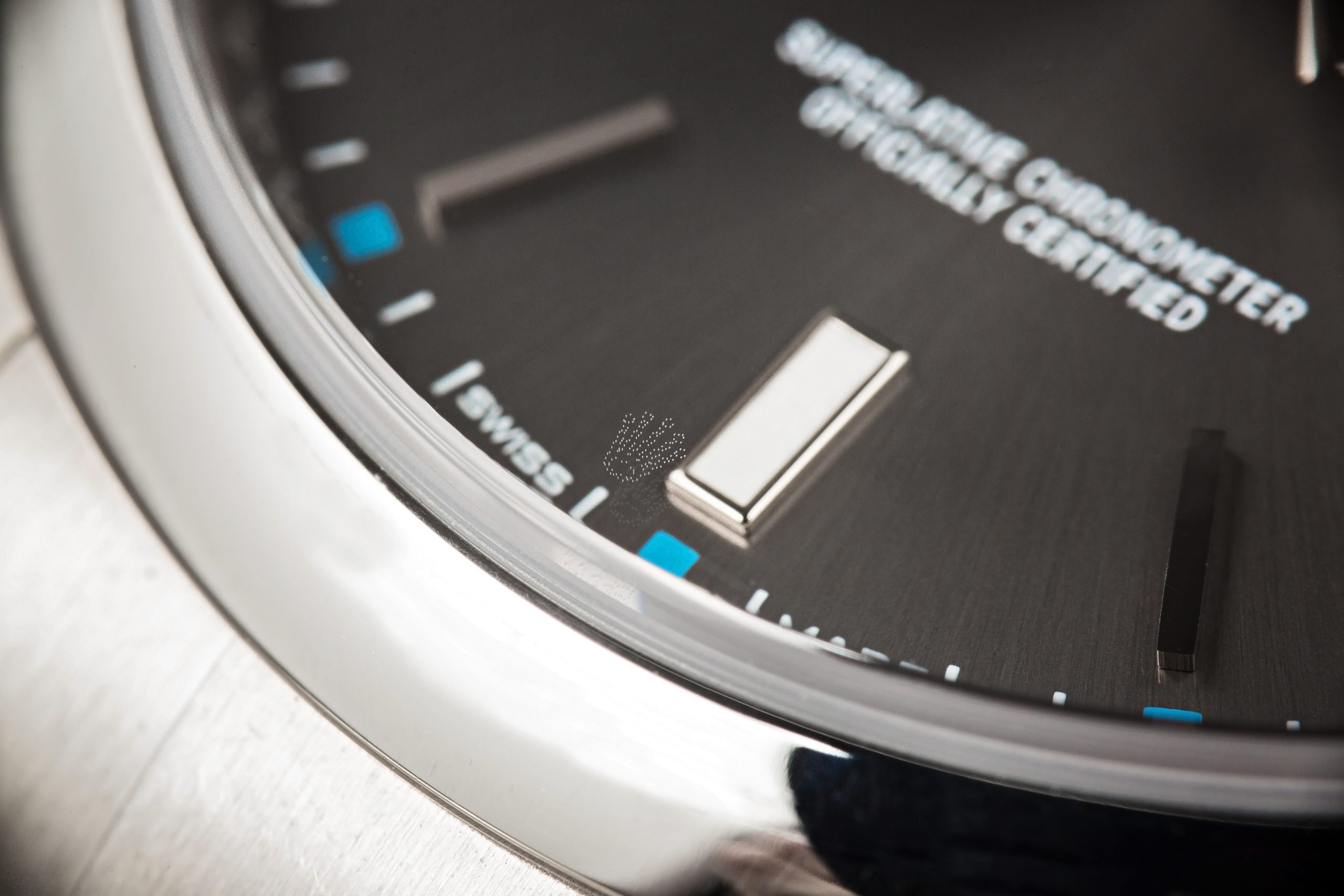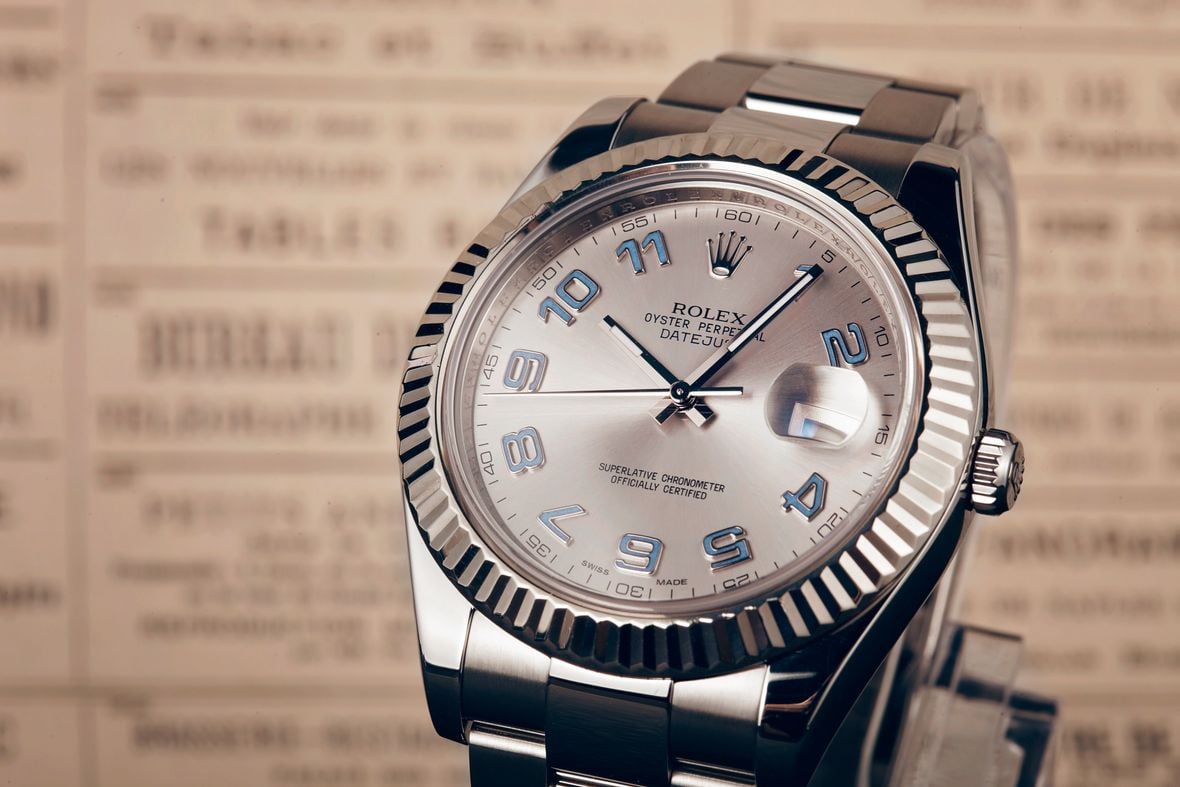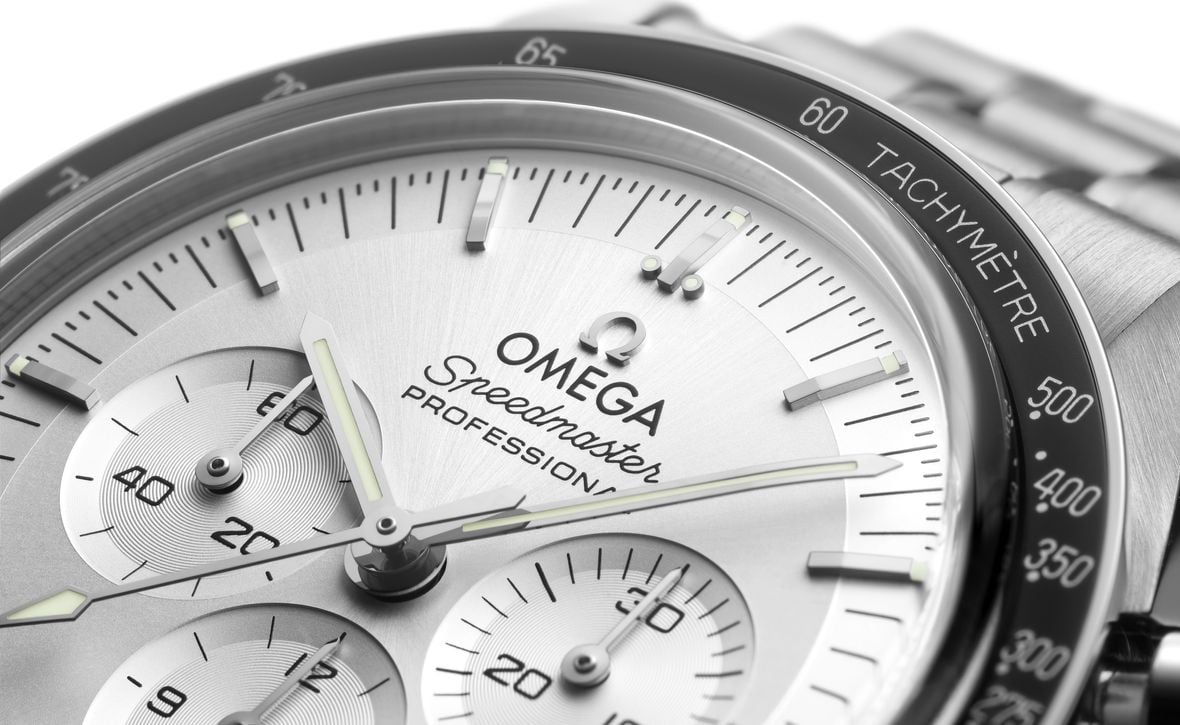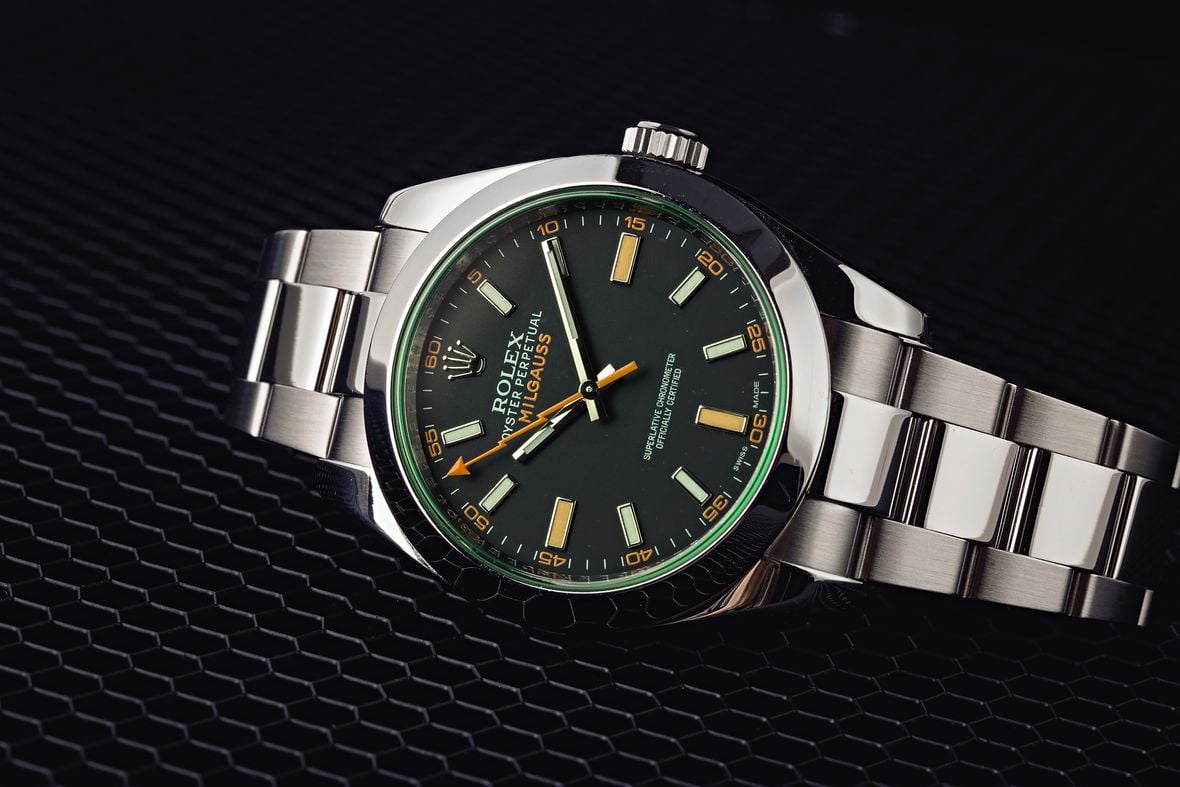Everyone loves a good Easter egg hunt. Whether it is movies, paintings, video games, or even watches, discovering hidden features and details is always an exciting part of any interest or hobby. Whether they serve as functional design elements, anti-counterfeit measures, or simply are the byproducts of changes in the manufacturing process, there are many hidden details on the pre-owned luxury watches we carry – and there might even be one on your watch that you just have not noticed before, even if you wear your watch every single day.
Time to grab your loupe and find a brightly-lit room because below we are breaking down some of our favorite luxury watch Easter eggs to help get you in the holiday spirit.
Click here for a closer look at some of the best luxury watches for starting out a collection.
The Laser-Etched Crown in Sapphire Rolex Crystals
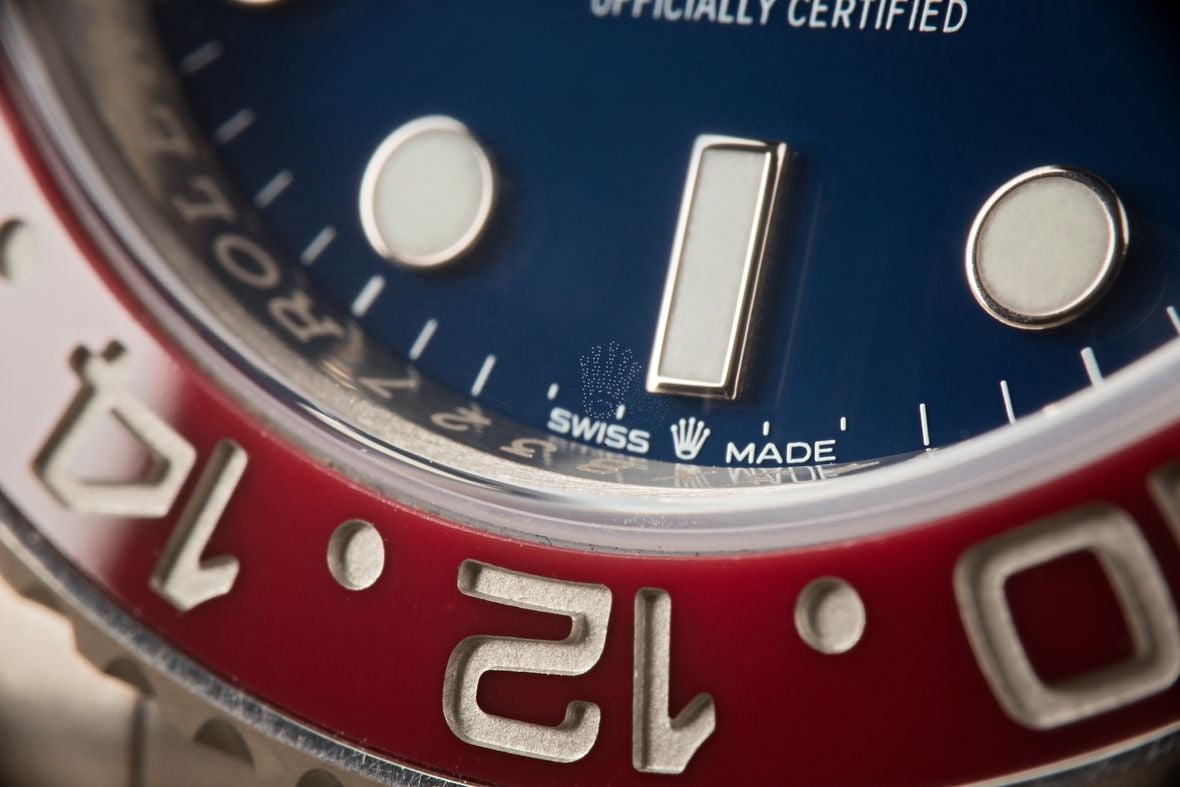
This one might be one of the most famous Easter eggs in the entire world of luxury watches. On modern Rolex sapphire crystals, there is a tiny Rolex logo laser-etched directly into the crystal itself, right at the 6 o’clock location.
Rolex started etching its sapphire crystals around 2001 as a way to deter counterfeiters, and now every watch that the brand produces (with the one exception being the Milgauss with its green-tinted sapphire crystal) is fitted with a laser-etched crystal. If you don’t see the crown on the crystal on a 2001 or newer watch, you may want to check our fake vs real Rolex guide.
This laser etching can often be difficult to see (particularly if you have a light-colored dial) and it sometimes takes both magnifications and just the right lighting to be able to fully make out the coronet insignia. Additionally, it is also worth noting that you may come across some Rolex laser-etched crystals that are service replacement components and have a slightly different etching on them. On these service replacement crystals, you will see a tiny “S” placed inside the base of the coronet, which serves as a way to distinguish them as genuine service replacement crystals.
The Omega Logo in Hesalite Speedmaster Crystals
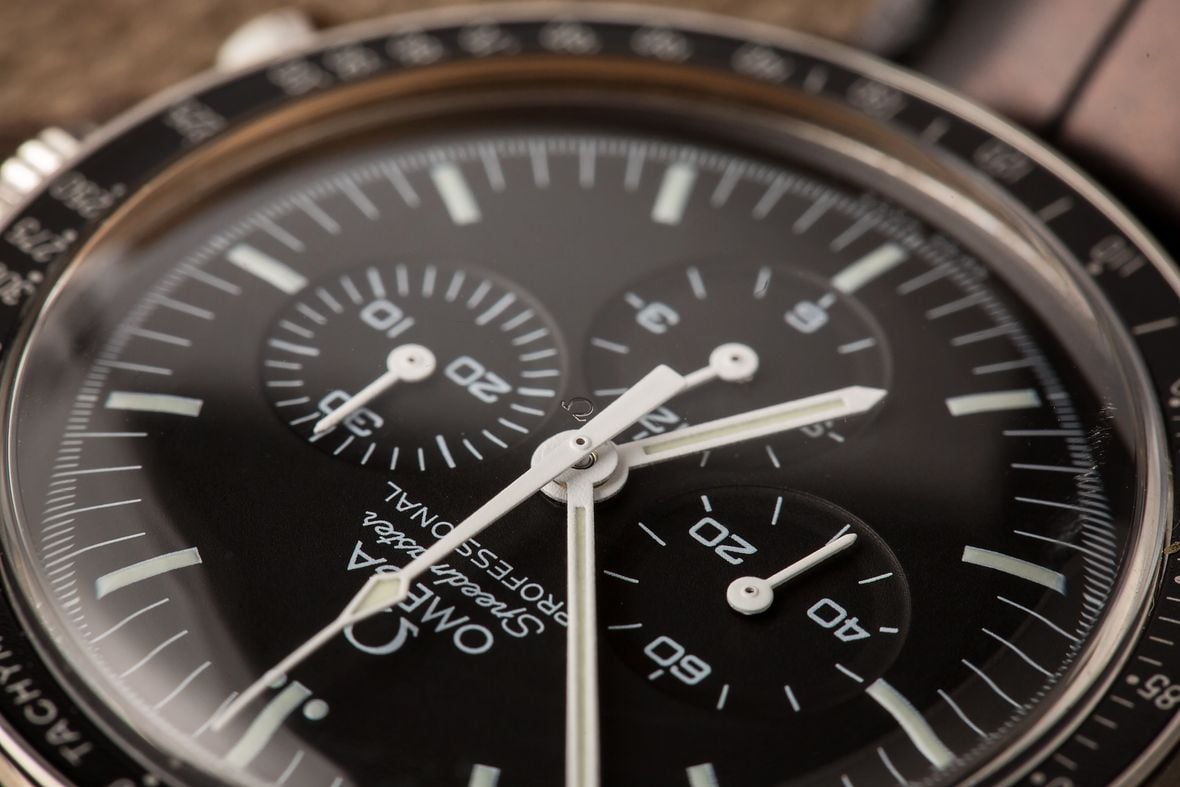
Rolex’s laser-etched crystals may receive the majority of the attention these days, but Omega has been producing crystals with hidden anti-counterfeit markings since the 1950s. Located directly in the center of Omega’s acrylic crystals is a tiny Omega logo. While the vast majority of Omega watches now feature sapphire crystals, the classic Speedmaster Moonwatch still features a traditional Hesalite crystal. If you look directly at the center of one, you will see a small Omega logo right above the hands.
While this unique feature is largely exclusive to the brand’s acrylic crystals, a small handful of Omega sapphire crystals also contain this subtle detail. The limited-edition 1957 Trilogy watches are intended to be near-exact recreations of their vintage counterparts, but they do feature sapphire crystals instead of acrylic crystals like the inaugural models from the 1950s. However, the domed sapphire crystals on these watches contain this subtle detail etched into them as a way to more closely follow the designs of their vintage OMEGA predecessors.
The Green Date Wheel on the GMT-Master II Ref. 116718
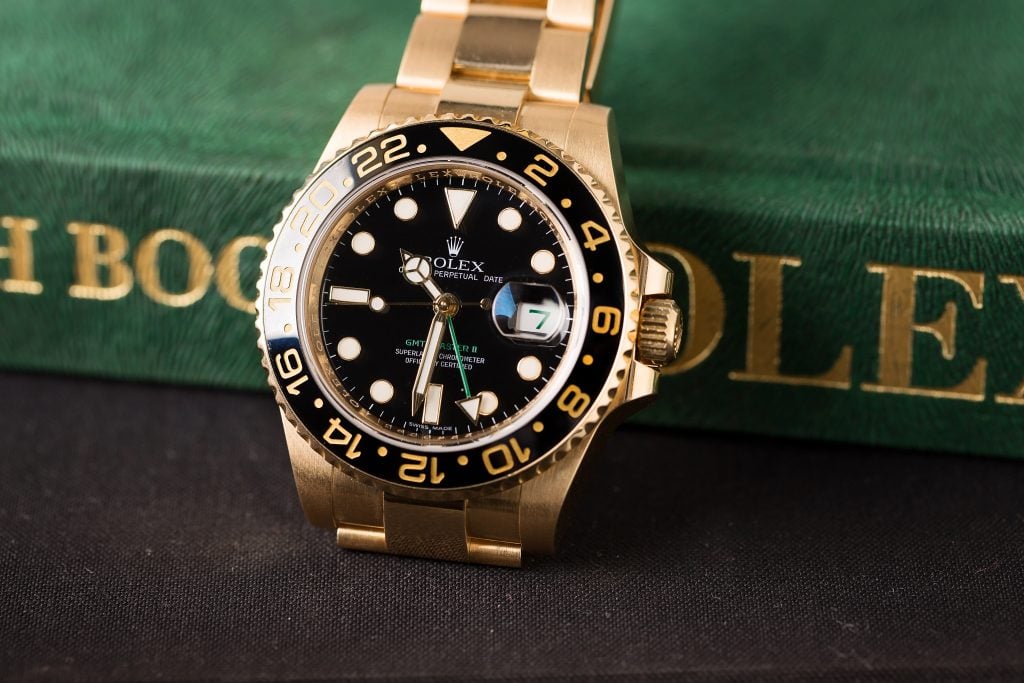
Green is Rolex’s signature color. So, it isn’t unusual to see the brand incorporate different shades of the hue into various offerings in its lineup, most notably anniversary models. Rolex did just that when ref. 116718 hit the market in 2005, marking the 50th anniversary of the GMT-Master collection. The yellow gold model initially debuted with a bright green anniversary dial, followed by the black dial variant. As the first in the 6-digit GMT Master II series, both models also featured shiny new ceramic “Cerachrom” bezels, new movements, the upgrade to Rolex’s Triplock screw-down crown, and an anti-reflective Cyclops lens. But it’s what’s below that lens that we’re most interested in.
If you look closely at the black dial ref. 116718, you’ll notice that the numerals in the date wheel are green to match the GMT Master II logo and 24-hour hand. This small detail is easy to miss if you don’t already know it’s there. It’s elusive and unique to this GMT model, and that’s what makes the green date wheel such a charming Easter egg. Interestingly, the green dial variant does not have a green date wheel to match. Instead, it features all-gold hands, all-gold text, and a black date wheel. Next time you see a Rolex GMT green dial anniversary model, keep an eye out for the green date wheel.
The Hidden “50” on the OHMSS 50th Anniversary Omega Seamaster ref. 210.22.42.20.01.004
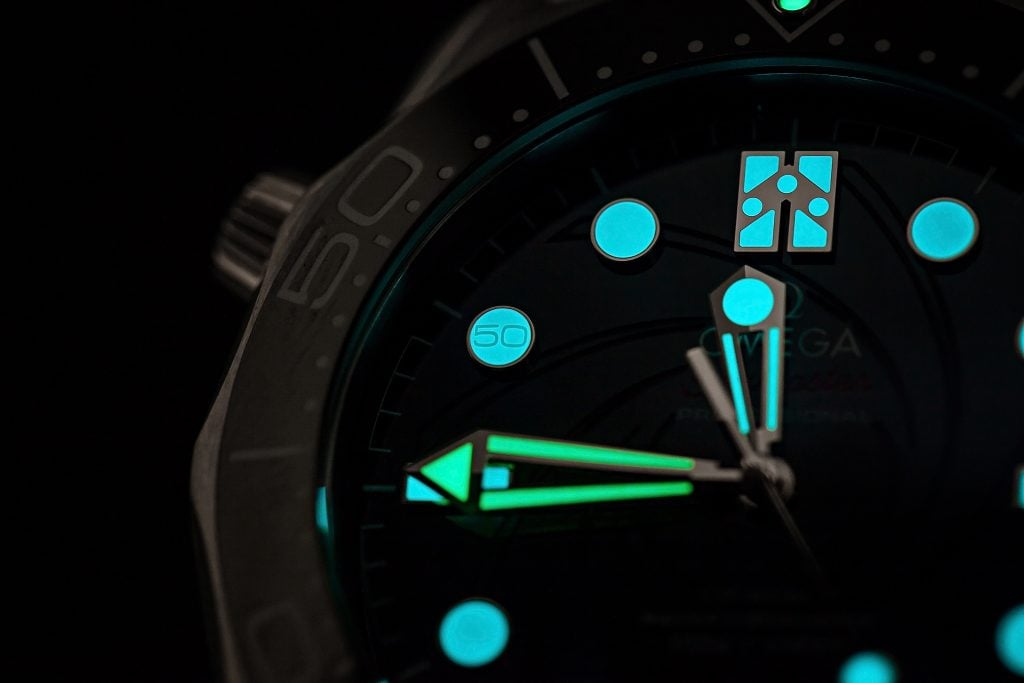
Omega has a storied history with the James Bond franchise, dating to 1995 when the debonair Pierce Brosnan took the screen as Agent 007 in the film GoldenEye with a Seamaster strapped to his wrist. An Omega Seamaster has been featured in every James Bond film since then. Omega has released countless editions of the Seamaster over the years to celebrate its partnership with James Bond, each sprinkled with different 007-inspired design elements. In 2019, Omega celebrated the 50th anniversary of the film On Her Majesty’s Secret Service by releasing a special edition of the Seamaster Diver 300M with various design elements inspired by the film.
Some are more obvious than others. For example, the dial is decorated with laser engravings in the shape of a gun barrel, the 12-hour maker features the Bond family coat of arms, the “7” In the date wheel is in a similar font as the 007 logo, and the case back features special limited edition writing. However, you’ll have to turn off the lights to see the next hidden Easter Egg. At night, the 10 o’clock hour marker reveals a “50” hidden within the lume. While you’re at it, you’ll also get a glimpse at another Easter egg mentioned in this guide because the lume glows in both green and blue. In true Omega fashion, the 50th-anniversary edition of the On Her Majesty’s Secret Service Seamaster Diver 300M was limited to just 7,007 pieces.
The Two-Color Lume on Omega Seamaster Watches
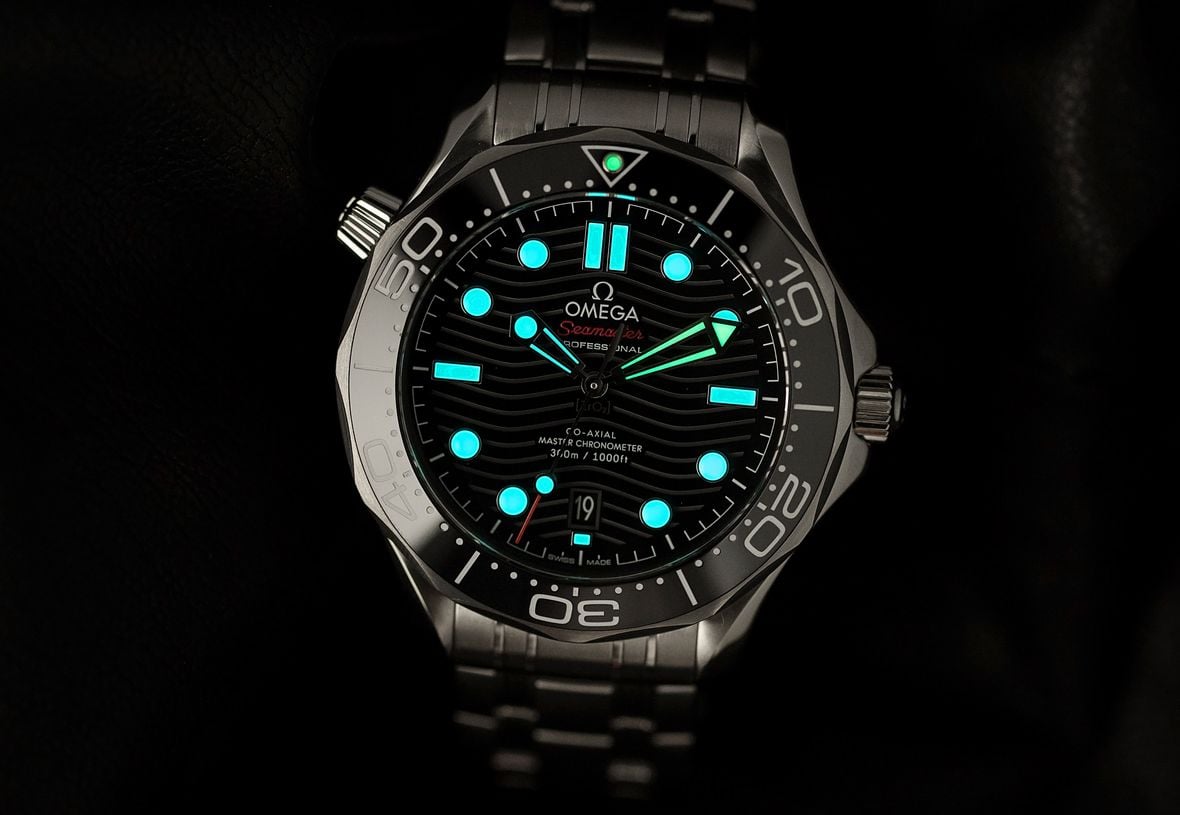
Luminous technology has come a long way in recent years. Just a few decades ago, the industry was still relying on radioactive materials to make watches glow in the dark. However, modern advancements in lume have allowed watch manufacturers to make dials and hands with a variety of different colors of lume. Not only can the luminous material itself be a specific color, but it can also be made to emit a different color when it glows in the dark.
Omega has fully embraced different colored luminous material, and all modern Omega dive watches from the brand’s Seamaster collection now feature two different colors of lume. The minute hand and the zero marker on the bezel insert are finished in green-glowing Super-LumiNova, while the rest of the hands and hour markers receive lume that glows blue. In the daylight, all of the luminous material appears plain white. However, in the dark, the contrast in colors allows users to more easily track elapsed time against the rotating bezel.
The Two Different Dials of the Rolex Submariner 116613LB
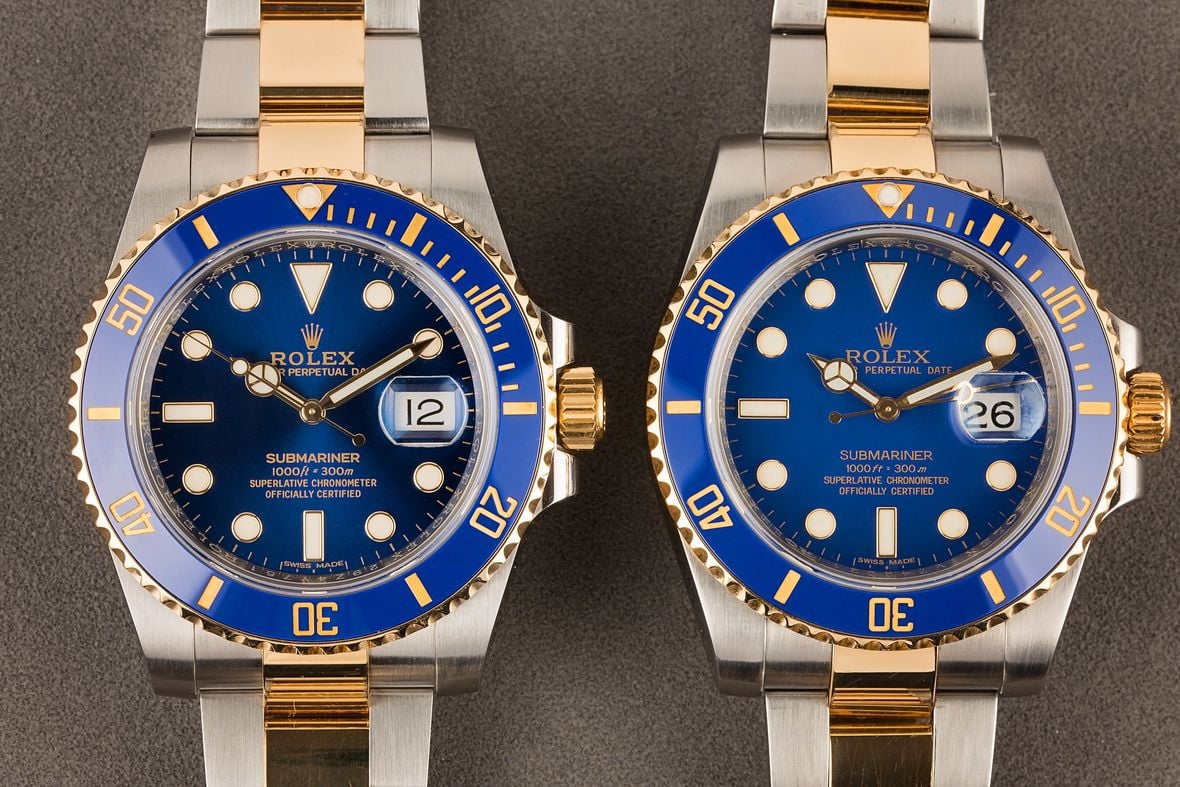
When it comes to collecting Rolex watches, it is often rare and unusual dial variations that are responsible for one watch being worth multiple times the value of its near-identical counterpart. However, one of the more unusual and short-lived Rolex dials that seldom receive all that much attention from the collecting community is the gloss blue dial that was fitted to early examples of the Rolex Submariner reference 116613LB. Yes, that is correct – there are two different blue dials for the Rolex Submariner ref. 116613.
When Rolex first updated the blue two-tone Submariner to feature a blue Cerachrom bezel in 2009, the brand originally also updated its blue dial. Rather than having a metallic sunburst finish like before, Rolex initially gave the reference 116613LB a bright blue dial with a flat glossy finish (somewhat similar to the style of dial found inside the white gold version of the watch). The intention was to make the dial better match the bright blue hue of the ceramic bezel, but many collectors lamented the loss of the blue sunburst dial and by 2013, Rolex had discontinued the gloss blue dial and returned to the previous sunburst style for the blue versions of the two-tone Submariner.
The Zirconium Oxide Etching on Ceramic Omega Dials
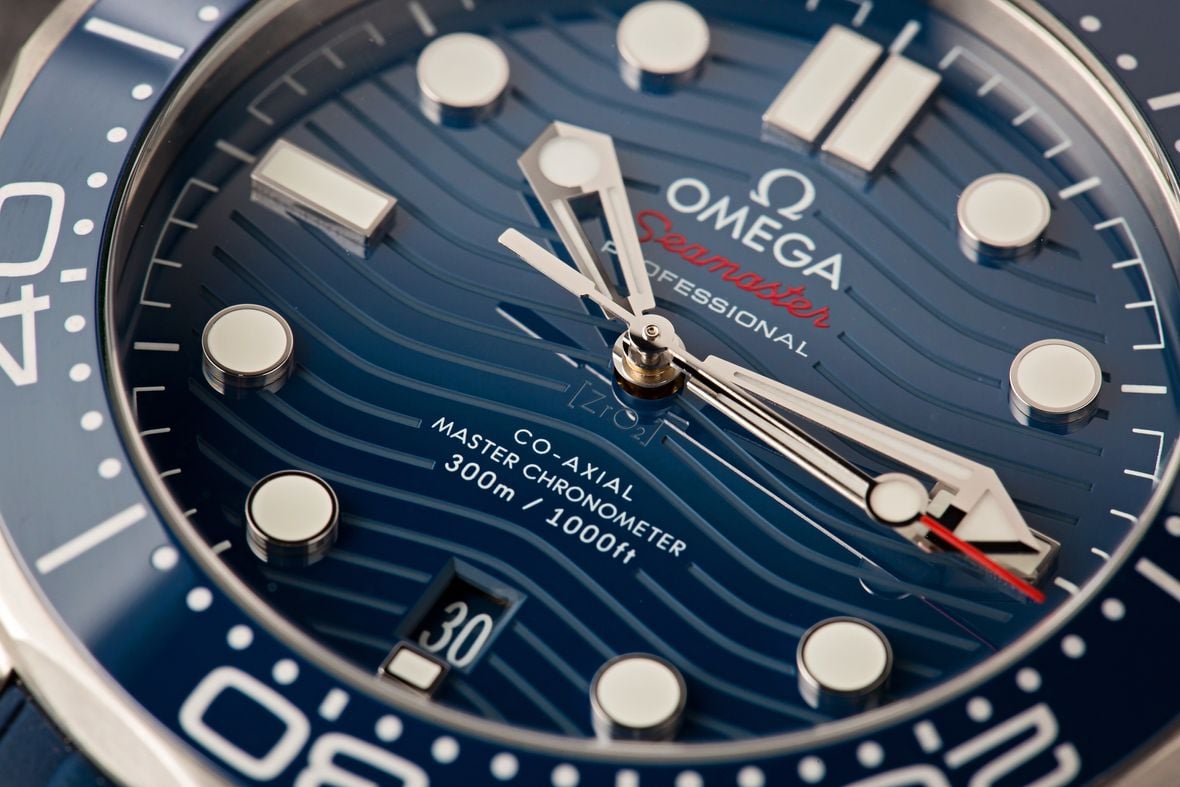
In more recent years, ceramic has started to play an increasing role in Omega’s manufacturing process. Ceramic bezels and cases have been options in the brand’s catalog for several years now, but one of the more recent developments is the use of ceramic dials. Most often found in select dive watches from the Seamaster collection, Omega’s ceramic dials feature a small marking to denote that they are made from ceramic. If you look at the center of the dial right below the hands, you will find a small “ZrO2” etching, which stands for zirconium oxide (the type of ceramic that Omega uses for its various components).
Rather than being constructed from a sheet of metal that is then coated with different surface finishing layers to provide it with its color and texture, Omega’s ceramic dials feature a sheet of zirconium oxide ceramic that gives the dial its unique aesthetic. Since ceramic is highly scratch-resistant and impervious to the fading effects of UV light, Omega’s ceramic dials promise to maintain their aesthetic for the foreseeable future. The dial color is determined by the actual color of the ceramic material itself and on many watches, Omega will laser engrave the surface of the dial to add greater depth and give it a unique, modern appearance.
The Glowing Head on the Omega Speedmaster Speedy Tuesday “Ultraman”
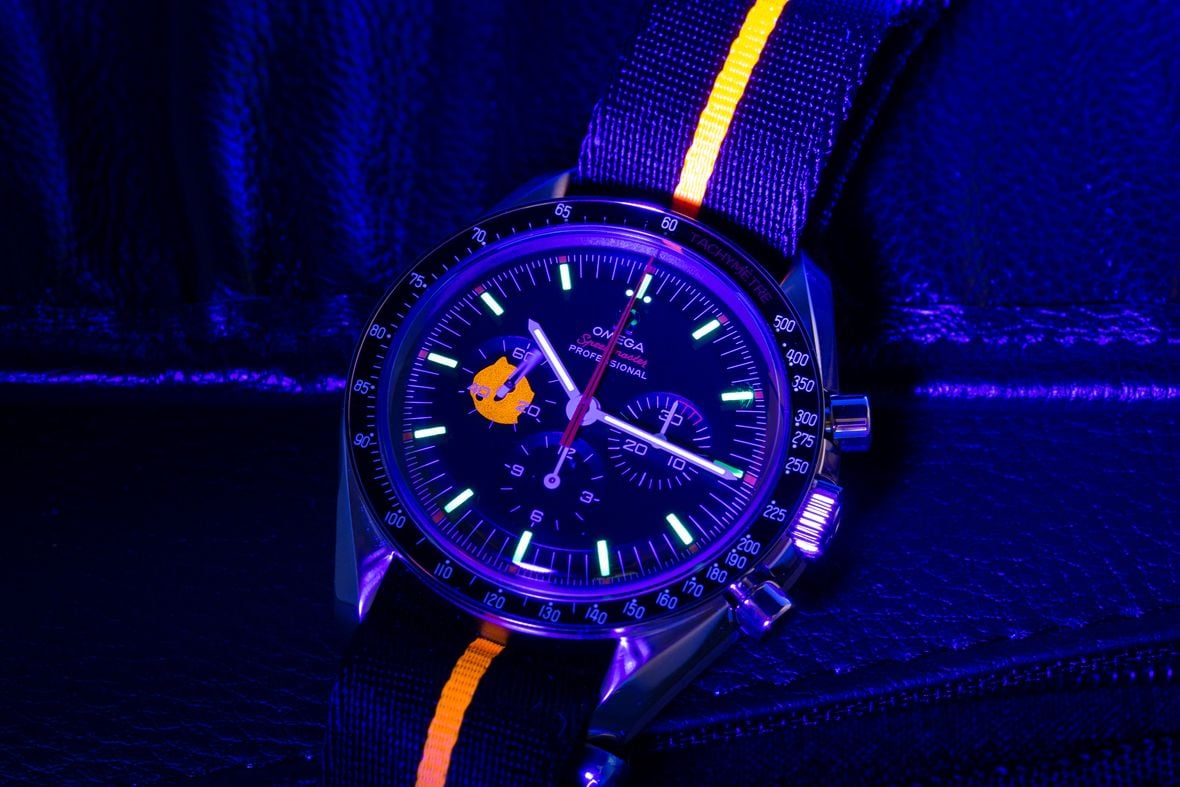
Omega is no stranger to having a bit of fun with the luminous material that it uses on watches. Even the brand’s standard-production dive watches feature two different colors of lume, so when Omega released the second Speedy Tuesday edition Speedmaster – a watch that draws inspiration from both a vintage Speedmaster model (nicknamed the Ultraman) and the Japanese ‘Ultraman’ television show, the brand included a hidden design element that can only be revealed under UV light.
Located inside the running seconds sub-dial at the 9 o’clock location is the silhouette of Ultraman’s helmet. Barely visible in the daylight, this hidden feature springs to life when exposed to ultraviolet light and the Ultraman head glows bright orange, rather than green like the rest of the lume used on the hands and hour markers. Omega even includes a little UV light among the various accessories in the box for the Speedy Tuesday Ultraman, so it seems that this hidden Easter egg is one that the brand wanted everyone to find and enjoy.
The Internal Antimagnetic Shield on the Rolex Air-King 116900
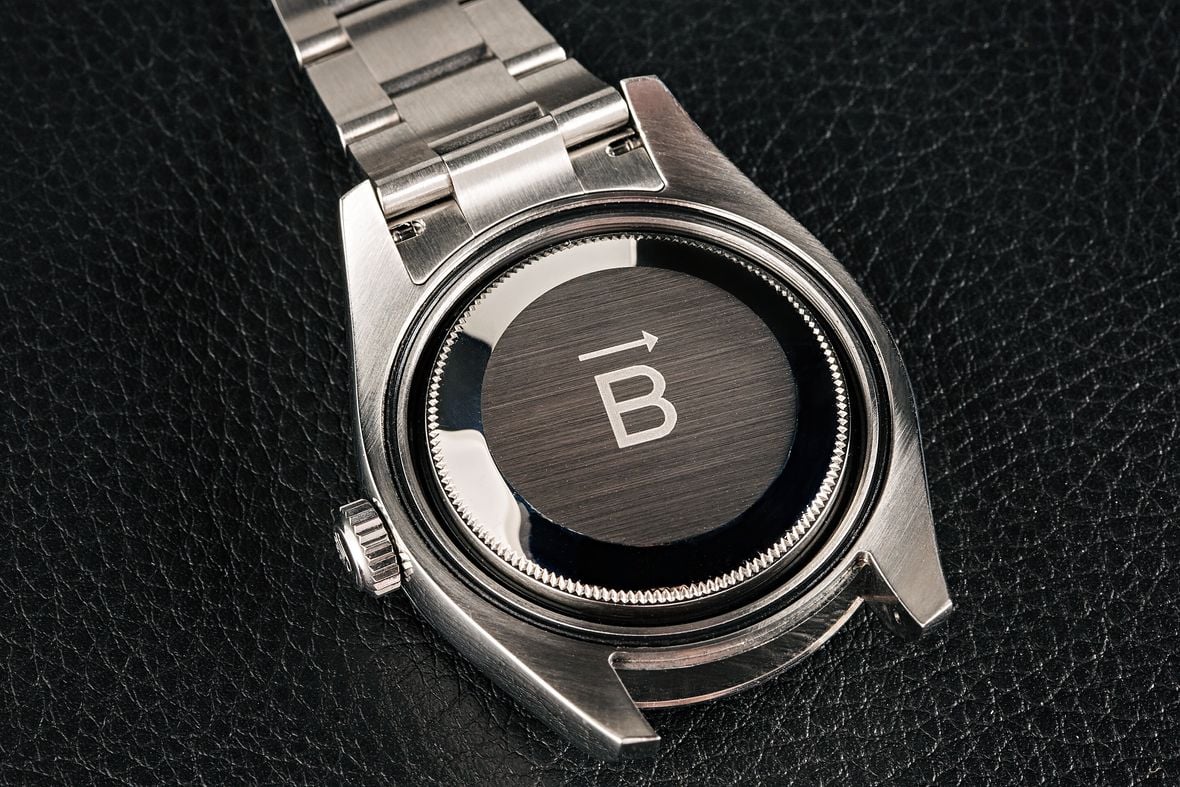
This particular Easter egg is so well hidden that you won’t even be able to see it without first opening up the case of the watch. Everyone knows how the Rolex Milgauss features an internal antimagnetic shield that protects its movement from disruptive magnetic fields. However, a lesser-known fact is that the recently discontinued Rolex Air-King reference 116900 also features this exact same internal shield, because it shares both a case and movement with Rolex’s famous line of antimagnetic watches for scientists. You can read a comparison we did on the Rolex Milgauss vs Air-King anti-magnetic watches here.
Although the outer caseback of the Rolex Air-King ref. 116900 does not feature any text like the one found on the Milgauss, the cases themselves are otherwise identical, right down to their internal antimagnetic shields. If you remove the outer caseback on a reference 116900, you will be greeted by another case-back that features the letter ‘B’ with an arrow above it, which is the symbol for magnetic flux density. While the outer caseback is made from stainless steel and is designed to prevent moisture and dirt from entering the watch, the internal caseback is crafted from ferromagnetic alloys that are specifically selected by Rolex to redistribute magnetic fields, and it functions just like the shield on the Milgauss to protect the Air-King’s movement.
